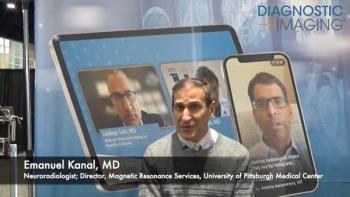
Storing only postprocessed images reduces demands on PACS
Huge data sets from the newer MR and CT scanners not only tax radiologists, they overburden a PACS as well. Researchers at Bundang Seoul National University Hospital in Korea have a solution: split the PACS and use smaller postprocessed data sets for
Huge data sets from the newer MR and CT scanners not only tax radiologists, they overburden a PACS as well. Researchers at Bundang Seoul National University Hospital in Korea have a solution: split the PACS and use smaller postprocessed data sets for most routine clinical work.
An institution performing 100 MDCT exams a day may generate 12 TB/year of data, resulting in $1 million in short-term storage costs alone. The constant avalanche of data can result in degraded system performance and frequent reinvestment in PACS expansion.
"Initial image data sets are stored in RawData PACS, then automatically routed to the relevant radiologist's postprocessing/analysis workstation," said RawData developer Dr. Kyoung Ho Lee, a clinical instructor in the Bundang diagnostic radiology department.
Under RawData PACS, only selected slices and postprocessed images are sent to the main PACS.
One of the main headaches in data storage is that source data from newer modalities are accessed by only a few users. Since source data are not for busy outpatient clinics, but only for image postprocessing and analysis, there is no need to keep the data in expensive short-term PACS storage for long periods of time. The extra data can be seen as troublesome by many clinicians who won't ever access it.
"Because initial image data sets are rarely retrieved, and only a few if any medical personnel access this data, a low-cost, small-capacity PACS can work effectively," Lee said.
The source data are permanently stored in the miniPACS, so the response time for data access is, effectively, zero. The fast access time enables postprocessing and analysis of every exam.
According to Lee, the RawData PACS technique can also be applied to other modality data sets, such as functional MR and contrast-enhanced ultrasound cine clips.
The RawData PACS frees the main PACS from the burden of handling data generated by the newest imaging techniques, avoiding unexpected and undesirable expansion of the entire PACS and leading to overall cost saving, Lee said.
"The cost-saving effect will also help in expanding application of the newest imaging techniques in daily practice," he said.
Newsletter
Stay at the forefront of radiology with the Diagnostic Imaging newsletter, delivering the latest news, clinical insights, and imaging advancements for today’s radiologists.




























